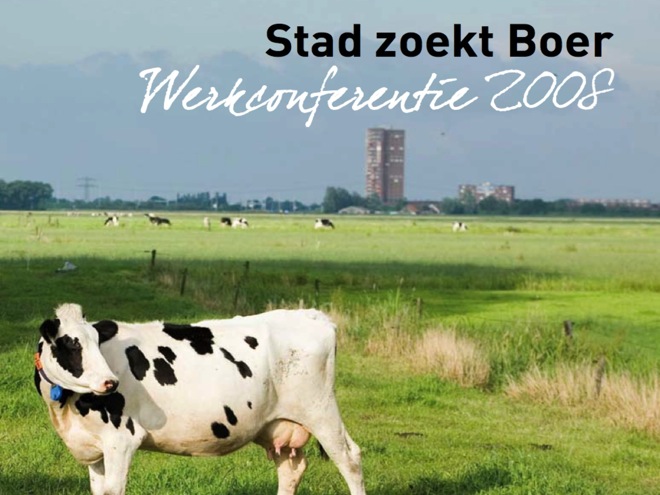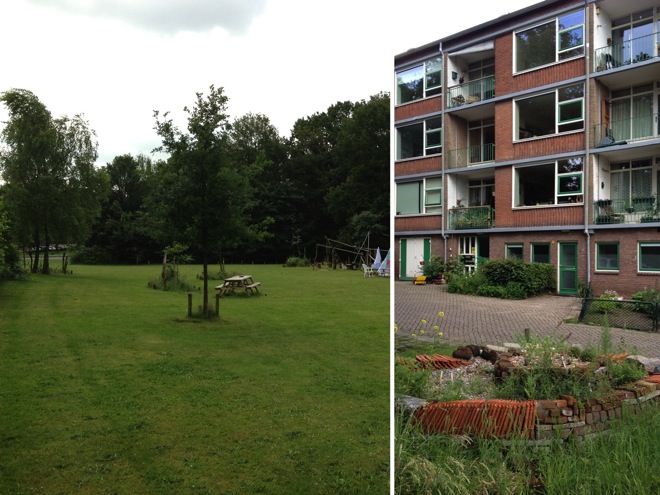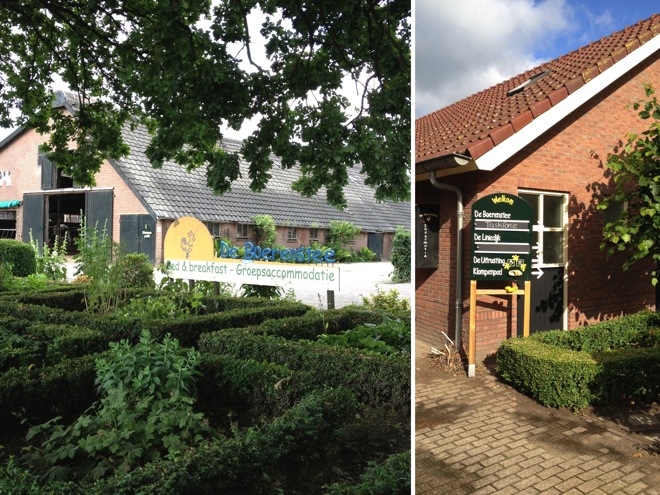Amersfoort / Opportunities & challenges
Towards a local sustainable food system
The food business is of vital importance for the agricultural surroundings of Amersfoort, economically, socially and from a landscape-viewpoint.
On a macro-economic scale the agricultural sector makes 4% of the total economic sector in the province of Utrecht.
City-farming, sustainable foods, healthy citizens, are topics that are rising within the city and the region.
In this context, the challenge is mostly to shift the large scale intensive agriculture that is important for the regional economy as well as distribution channels mostly based on large national supermarket chains towards more sustainable practices. The strategy of the city to leverage on the change of the demand is certainly the key. To date, the efforts started mainly 6 years ago are promising but have only reached engaged minorities and superficially changed the food market behaviour.
Ensure economic sustainability
Within the share of the production initiatives oriented towards local sustainable food, the difficulty is also to reach economic viability. This issue of fair trade in sustainable agriculture generating enough income for the producer without increasing selling prices is a general concern and also an issue in Amersfoort.
One of the promising strategies is to leverage on customer participation: as in the example of Het Derde Erf Community Supported Agriculture (presented above), members are taking part in the cultivation, harvesting and management of the initiative both reinforcing their feeling of belonging and strengthening its economic sustainability.
Another promising strategy is to leverage on multifunctional farming as in De Boerenstee case above generating more regular incomes from a range of activities from selling directly their products in farm gate shops to restaurants, lodging at the farm and any form of local tourism that farms near the city can organize.
Ensure convenient supply facilities
Amersfoort focused its effort to both stimulate local sustainable food production and to raise corresponding expectations and demand among the population. The match-making action “City is looking for farmer” in 2007 and 2008 set the ground to kick-off a series of projects both on the growing and enjoying side.
For the share of the population who show interest in sustainable food, its accessibility on a regular basis seems to be one of the key bottlenecks.For projects initially initiated as awareness raising events such as the quarterly farmers market Echt Eten in de Eemstad, the challenge is to transform it into a more regular process and to multiply the initiatives. The logistics and delivery on a regular basis in the city seems to be key. Beyond groups of active enthusiast participating in the Community Supporting Agriculture-like communities, limited daily access to sustainable food appears as a barrier to supplying a larger share of the city population.

Exploration of new solutions (i.e. delivery points in local supermarkets; new farmer’s retail spaces in the city…) is in progress to improve sustainable food access in the city.
Enabling bottom-up initiatives and removing barriers
The current strategy of the city of Amersfoort to promote sustainable food is to enable citizens and stakeholders to take action and strongly engage in multiple initiatives on both the Growing and Enjoying side of sustainable food.
Public authorities seem to focus less on classical levers to promote sustainable food such as public procurement, public canteens, awareness raising campaigns … But they show a strong commitment in engaging and facilitating civil society initiatives.
Regulatory changes, such as the change in the municipal law to allow growing food in public spaces is a good illustration of the posture of public authorities enabling bottom-up actions. The food sector in general and in particular in the Netherlands is strongly regulated. This regulation is necessary to ensure food safety and quality but it may also constitute barriers to innovation especially to original and breakthrough initiatives reinventing the traditional food chain. In view of this situation, the public authorities of Amersfoort show a very progressive posture both encouraging the emergence of bottom-up driven initiatives and following attentively their development reacting promptly when they encounter barriers. This ‘enabling posture’ is certainly an interesting model to share within the URBACT network especially with traditionally top-down public administration cultures.

Keeping the momentum of a lively fabric of bottom-up initiatives
On the Enjoying side, many food-oriented public events have been organized to raise awareness of the population and of professionals from the food sector: Streekmenu (chefs participating in a local menu project); Sofie op de Wallen (large annual public meal); the quarterly farmers market Smaak van de Streek and many other inclusive micro-initiatives mixing food with music, games, health, learning or recreational popular activities. These numerous initiatives will culminate in early October in a week of celebration of Hoofdstad van de Smaak, Amersfoort as Dutch Capital of Taste.
The strategy of stimulating social innovation and bottom-up initiatives creates a lively and promising context to promote sustainable food. It raises also a series of questions. How can we connect and synergise those many small initiatives? How can we upscale the most promising one? How can we reach populations beyond the foodies? How can we embed more in-depth the emerging interest in food and gain from the traditions of countries with stronger food cultures?
Last but not least, the activation of the social fabric is based on a continuous renewal of projects and initiatives by city stake holders. Capital of Taste is the current highlight but nothing important is foreseen after. The sustainable food stakeholders see the participation in URBACT as a possibility to leverage on to keep the momentum.
